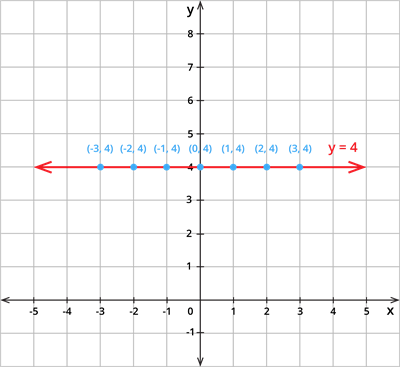UPSKILL MATH PLUS
Learn Mathematics through our AI based learning portal with the support of our Academic Experts!
Learn moreConsider drawing a line parallel to x - axis, which is at a distance of b units. Then, the y coordinate of every point on the straight line will be "b".
Hence, the general equation of the line parallel to x - axis is y = b.
Example:
Consider plotting the points (-3,4), (-2,4), (-1,4), (0,4), (1,4), (2,4), (3,4).

Now, draw a line joining these points. The line is at a distance of 4 units from the x - axis. Here, b = 4.
Therefore, the equation of the line parallel to the x axis is y = 4.
Important!
1. If b > 0, then the line y = b lies above the x - axis.
2. If b < 0, then the line y = b lies below the x - axis.
3. If b = 0, then the line y = b lies on the x - axis.